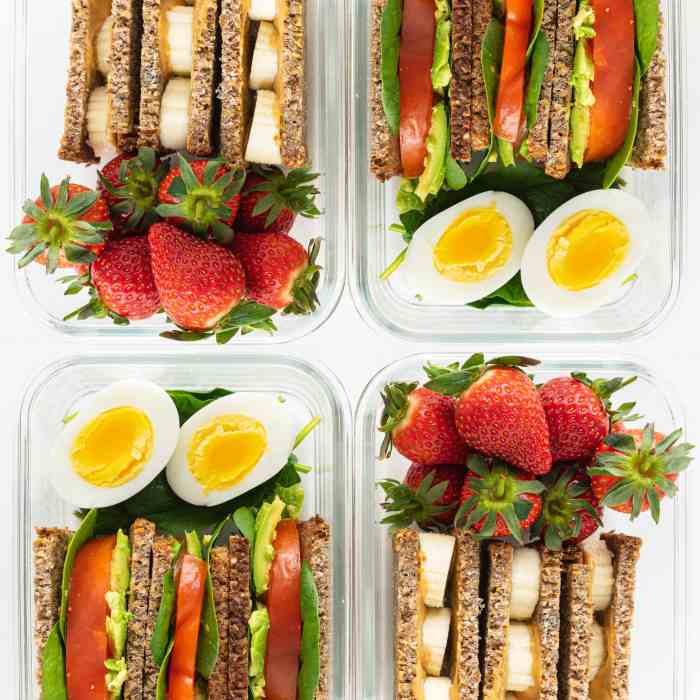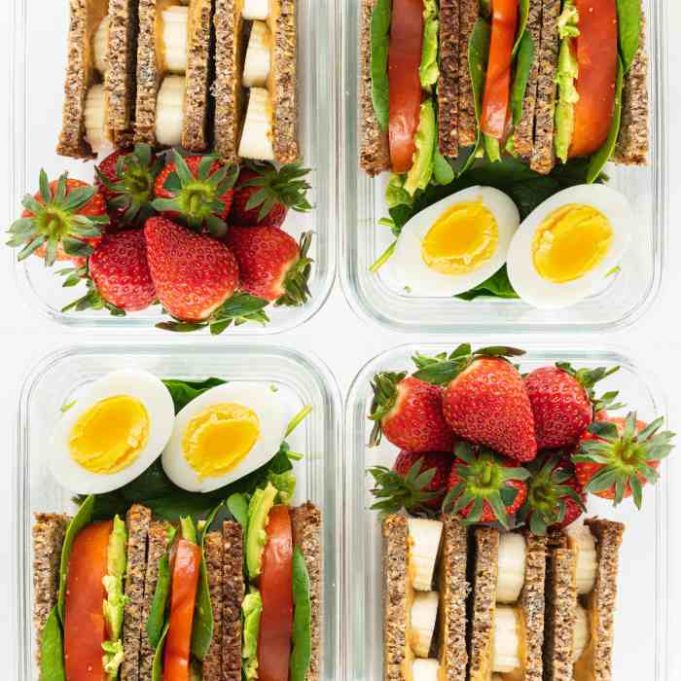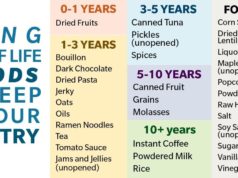Best food to buy for prepping is a question that many people ask, especially those seeking to ensure food security in times of need. It’s about having a well-stocked pantry that provides essential nutrients and sustains you through challenging situations. This guide explores the best foods to buy for prepping, considering factors like shelf life, nutritional value, and versatility.
We’ll delve into the characteristics of foods suitable for long-term storage, providing a list of essential staples like canned goods, dried beans, rice, and grains. We’ll also discuss techniques for preserving fresh produce, including freezing, drying, and other methods to extend its shelf life. Protein sources, essential for a balanced diet, will be covered, along with considerations for specific dietary needs like vegetarian, vegan, or gluten-free diets.
Protein Sources for Prepping

Protein is a crucial macronutrient for maintaining a healthy body, especially during emergency situations. It helps in building and repairing tissues, boosting the immune system, and providing energy. Having a good supply of protein-rich foods in your prepping supplies is essential for ensuring a balanced and nutritious diet.
Protein Sources for Prepping
Here are some protein-rich foods ideal for prepping:
- Lean Meats: Beef, chicken, turkey, and pork are excellent sources of protein. Choose lean cuts to minimize fat content.
- Fish: Canned salmon, tuna, and sardines are great sources of protein and omega-3 fatty acids. These are shelf-stable and easy to store.
- Legumes: Beans, lentils, and peas are excellent sources of plant-based protein, fiber, and other essential nutrients.
- Eggs: Eggs are a complete protein source, meaning they contain all nine essential amino acids. They are also a good source of vitamins and minerals.
- Nuts and Seeds: Almonds, walnuts, pumpkin seeds, and sunflower seeds are packed with protein, healthy fats, and fiber.
- Dairy Products: Milk, yogurt, and cheese are good sources of protein and calcium. Choose shelf-stable options like powdered milk or canned cheese for longer storage.
Proper Storage and Thawing Techniques
Proper storage and thawing techniques are essential for maintaining the quality and safety of protein sources.
- Refrigerator Storage: Keep meat, poultry, and fish in the refrigerator at 40°F or below.
- Freezing: Freeze protein sources in airtight containers or freezer bags to prevent freezer burn.
- Thawing: Thaw frozen protein sources in the refrigerator, never at room temperature.
Meal Planning with Protein Sources
Incorporating various protein sources into your meal plan is crucial for a balanced and nutritious diet.
- Breakfast: Scrambled eggs with smoked salmon and avocado toast, or oatmeal with nuts and seeds.
- Lunch: Tuna salad sandwich on whole-grain bread, or lentil soup with a side of whole-grain crackers.
- Dinner: Chicken stir-fry with brown rice, or baked beans with whole-grain bread.
Prepping for Specific Dietary Needs
Prepping food for specific dietary needs presents unique challenges and considerations. Whether you’re catering to vegetarianism, veganism, gluten-free lifestyles, or allergies, ensuring your preparedness includes options for everyone is crucial. This section will delve into the intricacies of prepping for various dietary needs, providing practical tips, recipes, and meal planning strategies.
Prepping for Vegetarian Diets, Best food to buy for prepping
Vegetarian diets exclude meat, poultry, and seafood. Prepping for vegetarians requires focusing on protein sources like legumes, tofu, tempeh, and nuts. It’s also important to ensure a variety of fruits, vegetables, and whole grains are readily available.
Here are some examples of recipes and meal plans suitable for vegetarians:
- Lentil Soup: This hearty soup is packed with protein and fiber, making it a satisfying and nutritious meal. Combine lentils, vegetables like carrots, celery, and onions, and spices like cumin and turmeric for a flavorful and filling soup.
- Tofu Scramble: This quick and easy breakfast option is a great source of protein. Crumble tofu and cook with onions, peppers, and spices like turmeric and garlic for a delicious and protein-rich breakfast.
- Black Bean Burgers: These flavorful and satisfying burgers are a great alternative to meat-based burgers. Combine black beans, oats, and spices like cumin and chili powder for a hearty and delicious burger.
Prepping for Vegan Diets
Vegan diets exclude all animal products, including meat, poultry, seafood, eggs, and dairy. Prepping for vegans requires focusing on plant-based protein sources like legumes, tofu, tempeh, nuts, and seeds. It’s also important to ensure a variety of fruits, vegetables, and whole grains are readily available.
Here are some examples of recipes and meal plans suitable for vegans:
- Vegan Chili: This hearty and flavorful chili is packed with plant-based protein and fiber. Combine beans, vegetables like onions, peppers, and tomatoes, and spices like cumin and chili powder for a satisfying and nutritious meal.
- Vegan Pasta Salad: This refreshing and flavorful salad is perfect for a light lunch or dinner. Combine pasta, vegetables like tomatoes, cucumbers, and bell peppers, and a vegan dressing like tahini or lemon vinaigrette for a delicious and satisfying meal.
- Vegan Stir-Fry: This quick and easy meal is a great way to get a variety of vegetables and protein. Combine tofu, vegetables like broccoli, carrots, and snap peas, and a vegan sauce like soy sauce or peanut sauce for a flavorful and nutritious meal.
Prepping for Gluten-Free Diets
Gluten-free diets exclude gluten, a protein found in wheat, barley, and rye. Prepping for gluten-free diets requires choosing gluten-free alternatives for bread, pasta, and other grain-based products. It’s also important to ensure that all ingredients used in meal preparation are gluten-free.
Here are some examples of recipes and meal plans suitable for gluten-free diets:
- Gluten-Free Chicken Stir-Fry: This quick and easy meal is a great way to get a variety of vegetables and protein. Combine chicken, vegetables like broccoli, carrots, and snap peas, and a gluten-free sauce like soy sauce or teriyaki sauce for a flavorful and nutritious meal.
- Gluten-Free Pasta Salad: This refreshing and flavorful salad is perfect for a light lunch or dinner. Combine gluten-free pasta, vegetables like tomatoes, cucumbers, and bell peppers, and a dressing like vinaigrette for a delicious and satisfying meal.
- Gluten-Free Pizza: This classic dish can be easily made gluten-free by using a gluten-free crust. Top the crust with your favorite toppings, such as cheese, vegetables, and meat, for a delicious and satisfying meal.
Prepping for Allergy-Friendly Diets
Allergy-friendly diets exclude specific foods that trigger allergic reactions. Prepping for allergy-friendly diets requires carefully reading food labels and avoiding ingredients that contain allergens. It’s also important to have alternative options available for those with allergies.
Here are some tips for prepping food for allergies:
- Read Food Labels Carefully: Always check food labels to ensure that ingredients do not contain allergens. Pay close attention to common allergens like nuts, dairy, eggs, and soy.
- Label and Organize Prepped Food: Clearly label all prepped food with the ingredients and any allergens present. Organize food by allergen category to prevent cross-contamination.
- Have Alternative Options Available: Keep alternative options available for those with allergies. For example, if someone is allergic to peanuts, have sunflower seed butter available instead.
Safety and Hygiene
Prepping involves storing food for extended periods, making food safety practices crucial. Proper hygiene and temperature control are essential to prevent foodborne illnesses and ensure the safety and longevity of your prepped food.
Cleanliness and Cross-Contamination
Maintaining cleanliness is paramount in food prepping. Using clean equipment and surfaces prevents cross-contamination, which occurs when harmful bacteria from raw food transfer to cooked food.
- Wash your hands thoroughly with soap and water for at least 20 seconds before and after handling food. This removes germs and prevents their spread.
- Clean and sanitize all surfaces, utensils, and equipment before and after use. Use hot, soapy water and a food-safe sanitizer for thorough cleaning.
- Separate raw meat, poultry, and seafood from other foods to prevent cross-contamination. Use separate cutting boards and utensils for each type of food.
- Store prepped food in clean containers to prevent contamination and ensure freshness. Use airtight containers to keep food sealed and prevent spoilage.
Temperature Control
Maintaining the correct temperature is crucial for food safety. Bacteria multiply rapidly in the “danger zone” between 40°F and 140°F. Proper temperature control helps inhibit bacterial growth and preserve the quality of your prepped food.
- Refrigerate perishable foods promptly after prepping. Refrigerate foods within two hours (or one hour if the temperature is above 90°F).
- Freeze foods that will not be consumed within a few days. Freezing slows down bacterial growth and extends shelf life.
- Cook food to the proper internal temperature to kill harmful bacteria. Use a food thermometer to ensure accurate temperature readings.
- Keep hot foods hot and cold foods cold. Use insulated containers to maintain the temperature of hot and cold foods.
Labeling and Storage
Proper labeling and storage ensure the freshness and safety of your prepped food. Labeling helps track expiration dates, identify contents, and maintain inventory.
- Label all prepped food with the date it was prepped or packaged. This helps track freshness and ensure proper rotation.
- Include a description of the food, such as the type of food, ingredients, and cooking instructions.
- Store prepped food in a cool, dry place, away from direct sunlight and heat sources. Avoid storing food near strong odors or chemicals.
- Rotate your prepped food stock, using older items first. This ensures freshness and prevents waste.
Last Word
Prepping for food security is a proactive approach to ensuring well-being. By carefully selecting and storing the right foods, you can build a resilient pantry that provides peace of mind. Remember to prioritize shelf life, nutritional value, and versatility when choosing your prepping staples. Incorporate a variety of foods to create balanced meals that meet your dietary needs. With proper storage and food safety practices, you can confidently create a prepping plan that provides both nourishment and peace of mind.
FAQ Section: Best Food To Buy For Prepping
What is the best way to store canned goods?
Store canned goods in a cool, dry place, away from direct sunlight and heat. Rotate your stock regularly to ensure freshness.
How long can dried beans be stored?
Dried beans can last for up to a year in a cool, dry place. Store them in airtight containers to prevent moisture absorption.
What are some good sources of protein for prepping?
Good protein sources for prepping include canned tuna, beans, lentils, nuts, and seeds. You can also consider freeze-dried meats or powdered protein supplements.
When it comes to prepping, focusing on nutrient-dense foods is key. Think canned beans, whole grains, and dried fruit. It’s also important to consider your overall dietary balance, as a varied intake is essential for optimal health. Understanding why is it important to balance your dietary intake can help you make informed choices about what to stock up on.
This way, you’ll have a well-rounded stash of food that provides the energy and nutrients you need for any situation.
When prepping your pantry, consider long-lasting staples like beans, lentils, and rice. These are versatile and provide essential nutrients. But to make the most of your food choices, it’s helpful to understand the best diet for your needs. Check out this article on what is the best diet to go on to gain some insights.
Once you have a better grasp of your dietary goals, you can tailor your prepping choices accordingly, focusing on foods that align with your chosen path.
When prepping for meals, consider stocking up on protein-rich foods like bone broth, which is a great source of collagen. If you’re looking for other ways to boost your collagen intake, check out this helpful article on how to add collagen to your diet.
Beyond bone broth, you can also find collagen in other readily available foods like fish, chicken, and eggs, making them excellent choices for your prepping pantry.






















